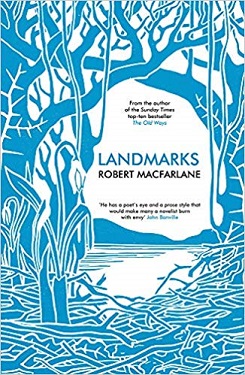
In
Landmarks Robert Macfarlane develops his conviction that fully knowing a landscape depends on knowing the many carefully specific words people have used to describe it. To this end he builds this book around types of land: mountains, woods, waterways, and more. Each chapter consists of a section on his encounter with an author who has written with verbal precision about one type, followed by a glossary of terms (usually not used in the first part of the chapter) gathered from multiple regions, dialects and languages of Britain and Ireland.
Chapter 10, titled “The Black Locust and the Silver Pine,” focuses on John Muir, a Scot who came to America. Macfarlane quotes from Muir’s works and notes his accomplishments, such as convincing Teddy Roosevelt to set aside Yosemite as a national park after the two men had camped there. “’Few are altogether deaf to the preaching of pine trees,’” Muir had written, and Roosevelt listened.
Macfarlane writes with much felicity. Here he is on the bristlecone pine: “Muir loved the bristlecone pine for its extravagantly torqued and gnarled form, and for its extreme resilience to the adversities of gale, avalanche and flame that the mountains threw at it. He was a bristlecone pine himself in that respect, and though his words lay dormant for decades, they would eventually germinate and grow with astonishing consequence.”
The glossary for this chapter, titled “Woodlands,” has subcategories of “Branches, Leaves, Roots and Trunks,” “Fallen Wood and Cut Wood,” “Woods and Woodlands.” Entries give the word, a brief definition, and the source. For example, “celynnog – abounding in holly (place name element) – Welsh” or “chissom – first shoots of a newly cut coppice – Cotswolds.” Many terms have delicious sounds, though some mysterious for an American to pronounce. This glossary runs to ten pages, and like all the others in the book gives a dizzying array of specific terms, many already lost in popular usage or rapidly disappearing. We lose the way to connect closely to the land, Macfarlane believes, when we lose these words.
The pleasures of this book lie in Macfarlane’s poetic nature writing, in making or renewing acquaintance with other inspiring nature writers, and savoring all those words.